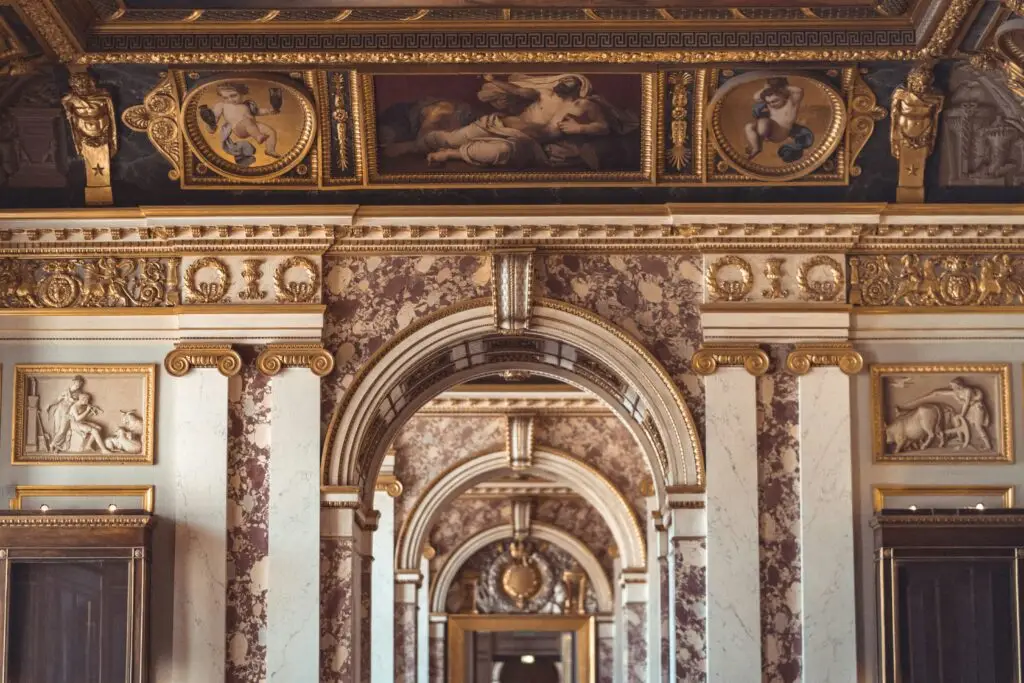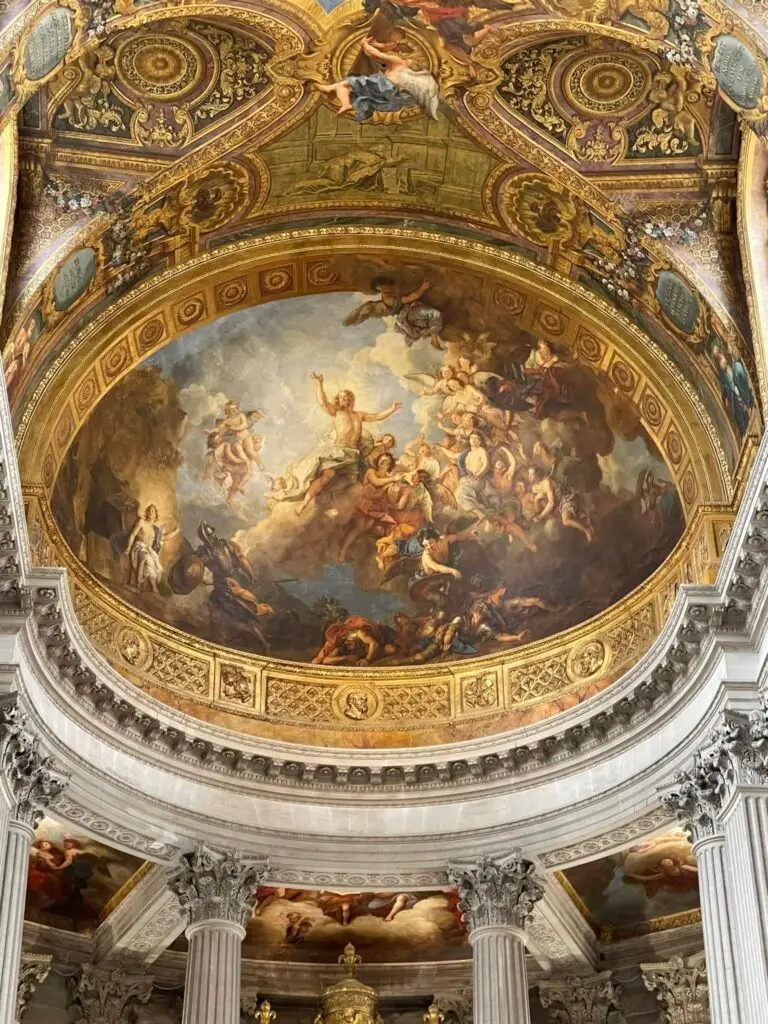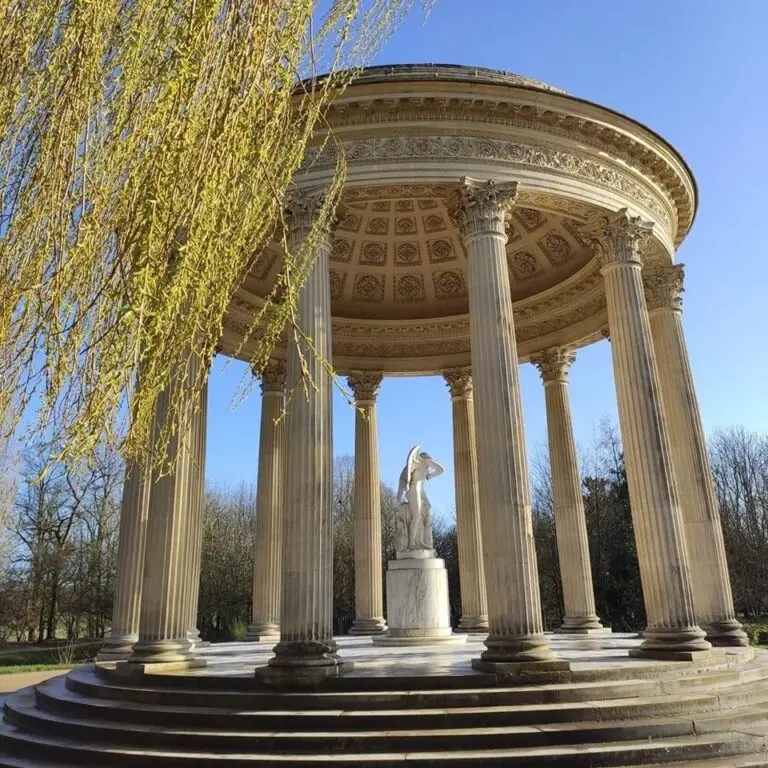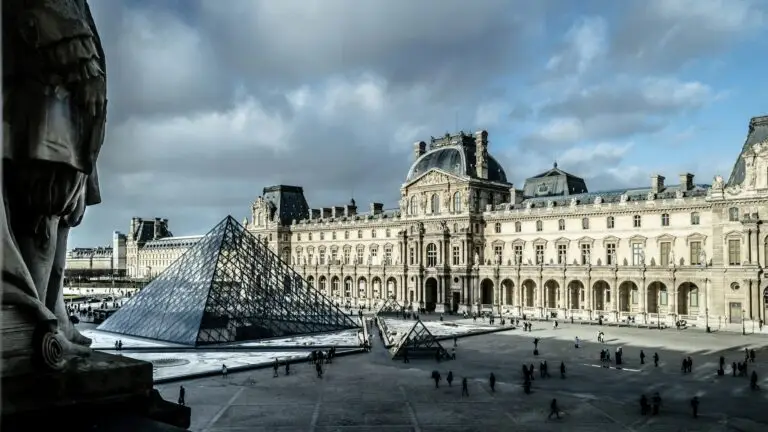Every morning, when I’m dropping my kids off at school, I watch them—tourists— forming long lines outside the castle. You know, after living in the shadow of the Sun King’s palace for nearly 12 years now, I’ve pretty much gotten used to sharing my hometown with millions of visitors every year. Actually, I kinda like it because it means that I often have friends in town!
“But seriously, how can you stand all those crowds?” my friends from Paris always ask. The truth is, I rarely visit the château myself anymore, or if I do, it’s during the slow season when it’s not so packed. We like spending time in the gardens as a family on the weekends.
Last month, I drove about an hour to Fontainebleau, and I’ve gotta tell you, walking through those imperial halls on a quiet Tuesday afternoon felt like I’d discovered some secret Paris had been hiding from me all this time.
So here I am, a Versailles resident who loves her city’s crown jewel but really cherishes those peaceful experiences, too. I feel like I’m in this unique position to compare these two amazing royal residences. My neighbors might consider this blog post total treason, but honestly, I think both châteaux deserve consideration—for completley different reasons.
Keep reading for my unfiltered take — from someone who sees Versailles’ grandeur (and gridlock) literally every single day.
Here’s my guide to these two magnificent rivals to hopefully put an end to the Great Château Debate: My Versailles vs. Fontainebleau Showdown.
(I’ll try to be impartial here, I promise!)
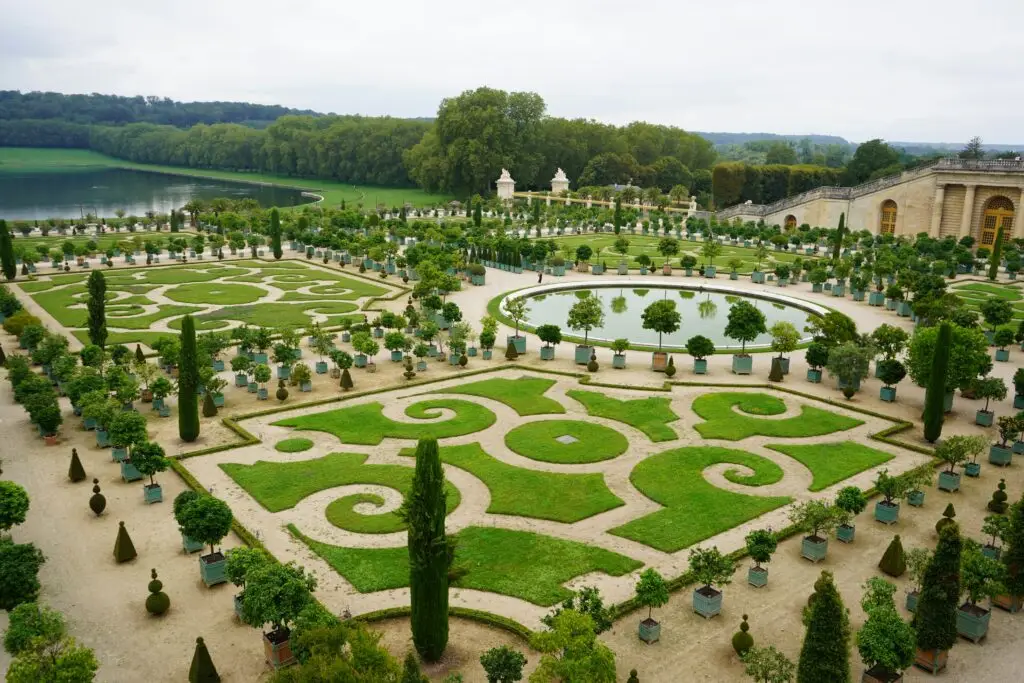
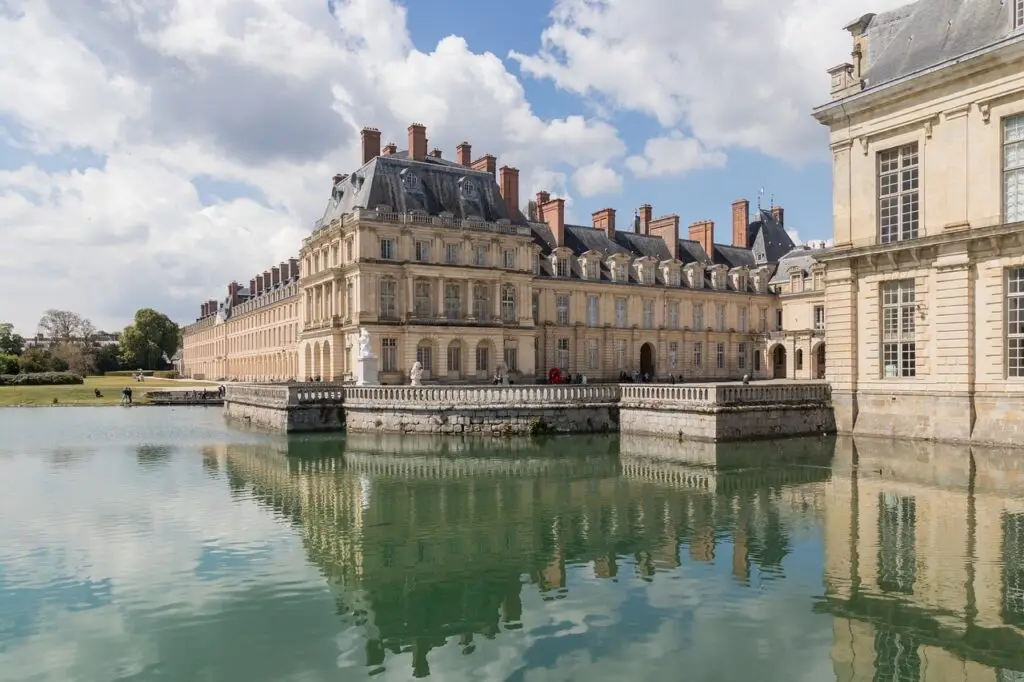
Why I Almost Chose Versailles over Fontainebleau
Historical Significance
When I first walked through those enormous gilded gates at Versailles, I felt the weight of history in a way textbooks could never convey. Versailles was the crown jewel of French Absolutism. Nothing else compares to the extravagance of Versailles.
Standing in the Hall of Mirrors, I can easily imagine Louis XIV (the Sun King) strutting about, deliberately designing every inch to intimidate foreign diplomats and demonstrate French supremacy. This wasn’t just a pretty palace—it was a political statement made manifest in marble and gold, the ultimate power move… before the Revolution swept it all away.
A Bucket List Experience
Standing in Versailles connects you directly with history’s most dramatic moments. As you walk through the Hall of Mirrors, you’ll be exactly where the Sun King Louis XIV displayed his absolute power, where Marie Antoinette‘s lavish lifestyle fueled a revolution, and where world leaders signed the treaty ending World War I in 1919.
This isn’t just about seeing beautiful architecture – it’s about experiencing the actual rooms where monarchy reached its peak before crashing down, where artistic innovation set standards for centuries, and where decisions shaped the modern world.
For anyone who values experiencing history firsthand rather than just reading about it, Versailles offers an irreplaceable connection to pivotal moments that changed everything. Your bucket list journey here isn’t just checking off a landmark – it’s walking through the very spaces where history was made.
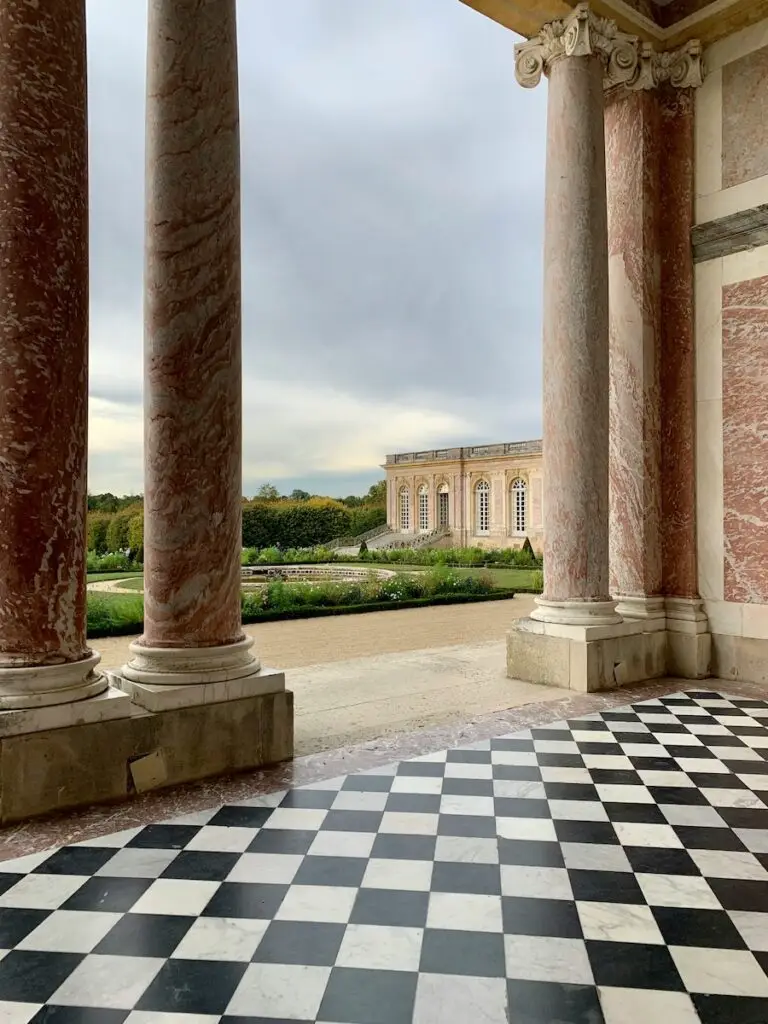
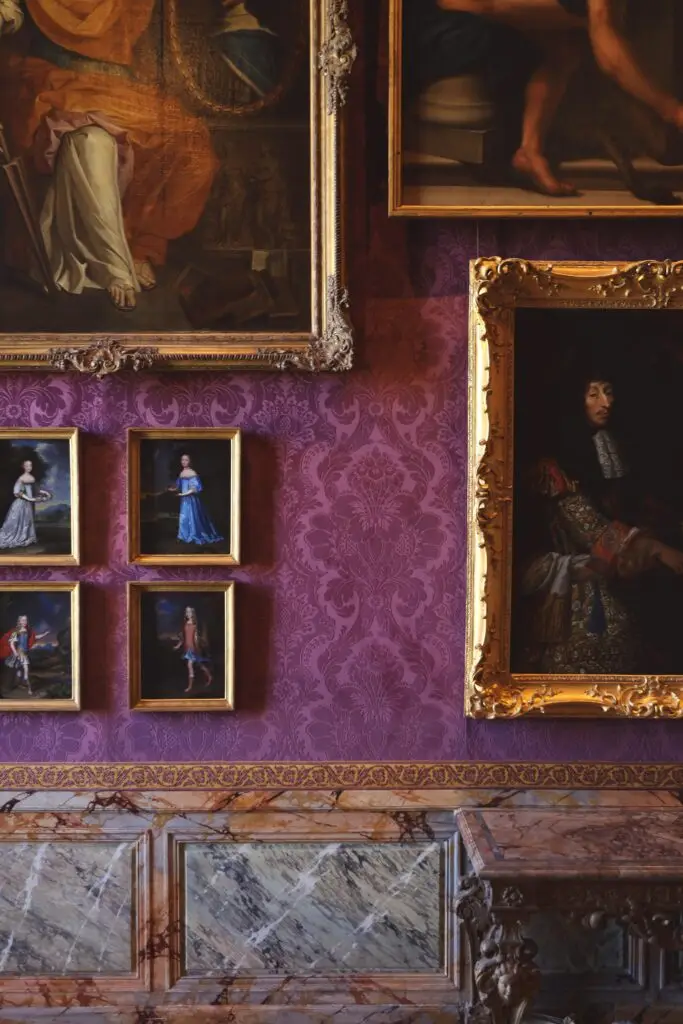
Architectural Grandeur
The sheer scale and opulence of Versailles remain unmatched. Versailles is wonderful, but you can not miss it if you go to any other castle, they are all beautiful. But Versailles is something else. No doubt, if I were only taking one trip to Paris and had to choose, I’d pick Versailles.
What makes Versailles architecturally significant isn’t just its size—it’s that it invented a language. Every palace built in Europe for the next century was essentially speaking in Versailles’ architectural vocabulary.
Living in Versailles, I’ve developed a deep appreciation for the architectural vision of Louis Le Vau, André Le Nôtre, and Jules Hardouin-Mansart. Walking through the Hall of Mirrors—even on a crowded day—I’m still awestruck by Hardouin-Mansart’s masterpiece of light, space, and symmetry. When the morning sun streams through those 357 mirrors, illuminating the gilded statues and crystal chandeliers, I understand why these halls changed the course of European architecture.
The Gardens
Versailles is known for its spectacular landscaped gardens. As many travelers suggest, allow two days… one to fully see all the gardens and one day to see the inside of the castle. The gardens of Versailles are considered masterpieces of formal French garden design.
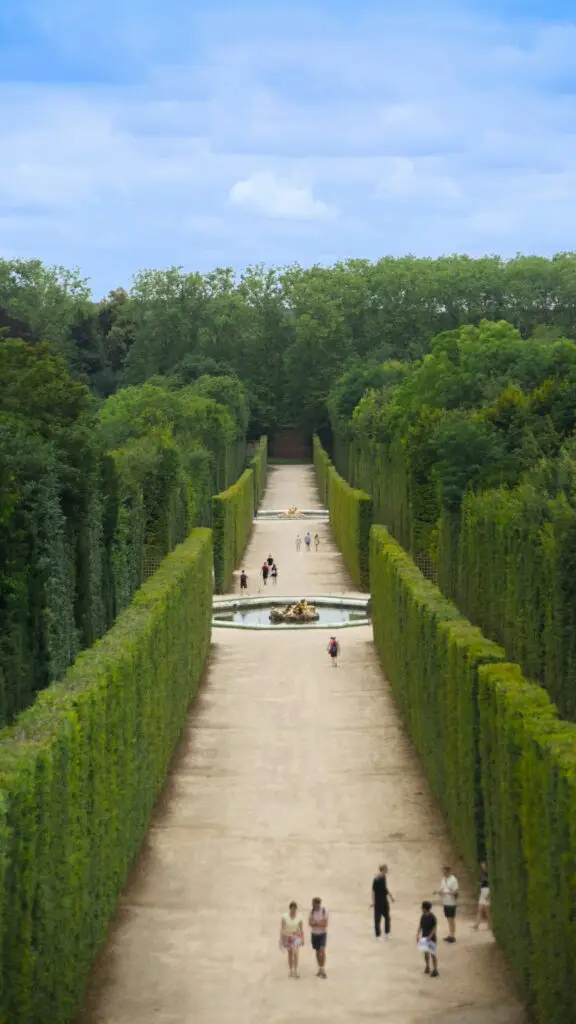
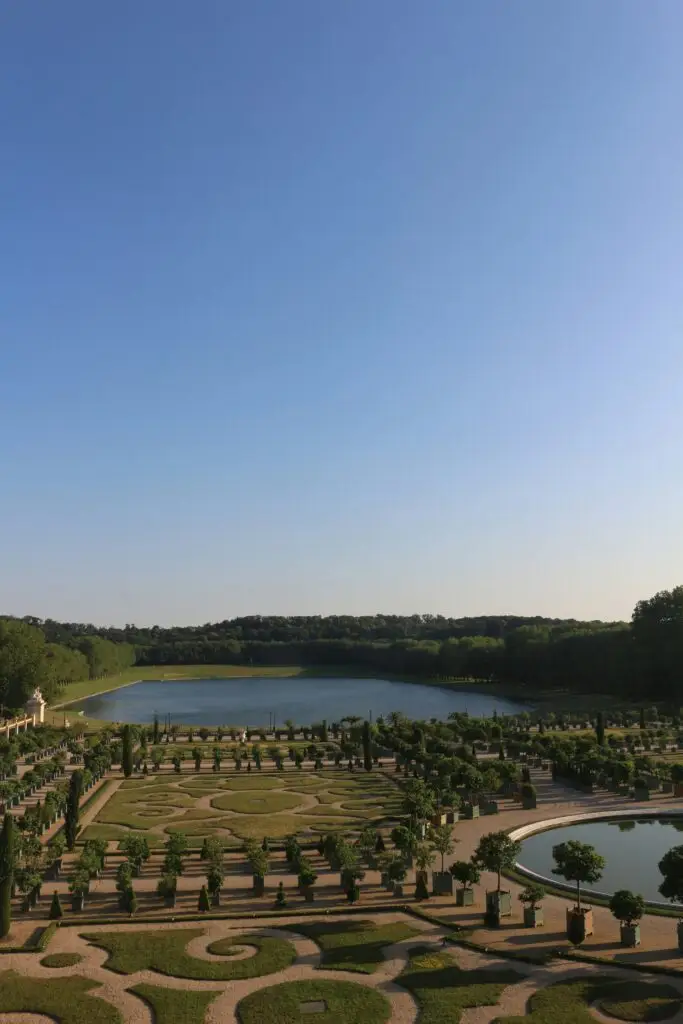
Why Fontainebleau Surprised Me
The Blessed Relief of Personal Space
I’ll never forget my first attempt at viewing the famous Hall of Mirrors at Versailles. After shuffling forward in a human traffic jam for 45 minutes, I caught fleeting glimpses of gilded surfaces while someone’s selfie stick repeatedly bumped my shoulder. (Selfie sticks are banned now in the castle, thank God!)
When I finally visited Fontainebleau, the contrast was shocking—I could actually hear my own footsteps echoing through magnificent rooms I had entirely to myself.
My experience wasn’t unique. Fellow travelers shared similar tales of Versailles trauma:
- “Versailles is absolutely ruined by over-tourism,” lamented one history buff whose enthusiasm was crushed by crowds.
- “When we visited Versailles the crowds were so thick we could not move. Bad experience,” reported a family who’d saved for years to visit.
- My favorite candid review came from a woman my mother’s age: “We were packed in those rooms like a herd of cattle. It was hot and I found it unbearable. All I could see was the top half of the walls and the ceiling and they all looked the same in the end.”
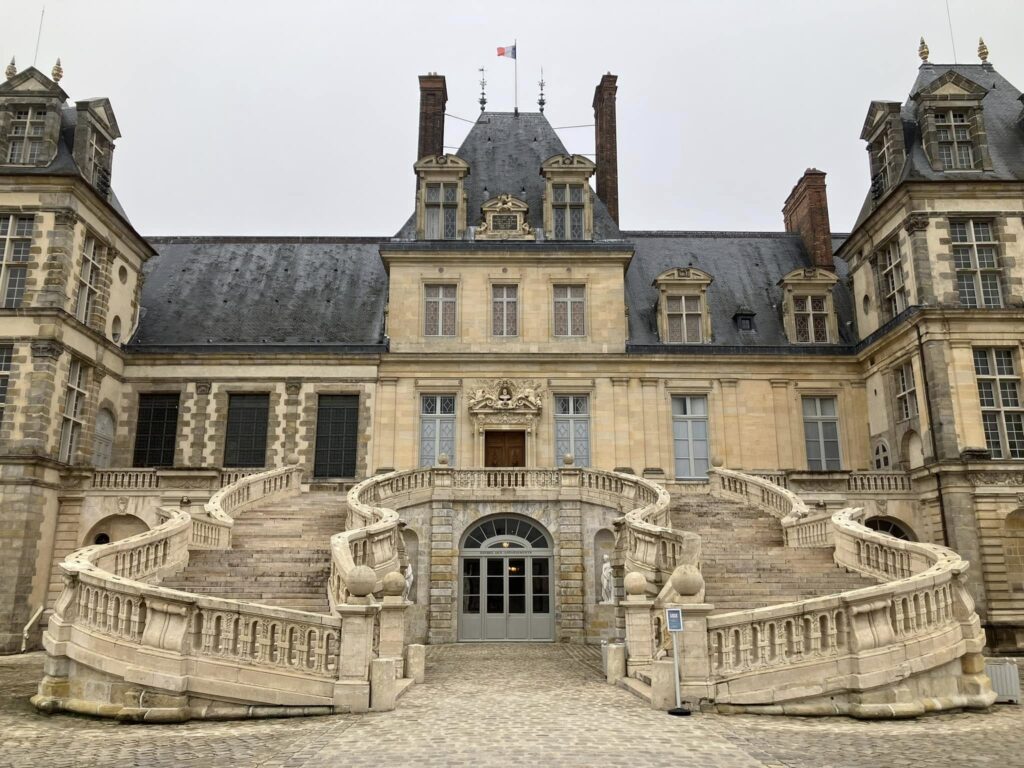
Rich Historical Timeline
While Versailles is primarily associated with a few monarchs, Fontainebleau offers a broader historical perspective.
Fontainebleau covers a period of 7 kings and 3 emperors. The Fontainebleau castle hosted every French ruler from Louis VII (12th century) through Napoleon III, spanning nearly 800 years of continuous royal residence.
This historical depth gives Fontainebleau something Versailles simply cannot match. While the Versailles palace represents the absolute pinnacle of French royal power, Fontainebleau chronicles its entire evolution.
When I walk through the François I Gallery with its frescoes by Rosso Fiorentino, then continue to Napoleon’s throne room with its contrasting Empire style, I’m experiencing centuries of transformation that Versailles’ more temporally concentrated splendor doesn’t capture.
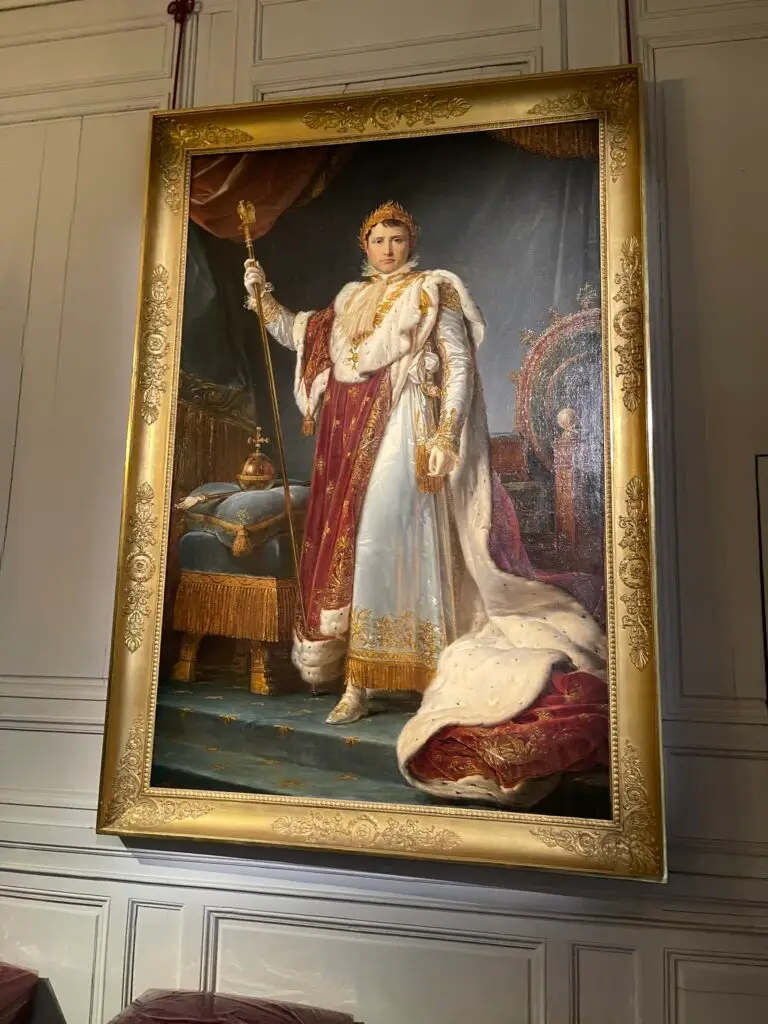
More Authentic Experience
Some visitors find Fontainebleau offers a more intimate glimpse into royal life than Versailles. The palace contains significantly more original furniture, creating a more authentic sense of how royalty actually lived.
Fontainebleau’s atmosphere allows for freer exploration without the crowds, giving visitors space to wander and appreciate the beautiful surroundings at their own pace.
Beautiful Surroundings
Fontainebleau offers much more than just the château itself. The palace is nestled within stunning countryside that enhances the overall experience.
Visitors particularly enjoy the open and accessible grounds, which are perfect for leisurely picnics. The free access to these beautiful surroundings makes it easy to combine cultural exploration with relaxing outdoor time, allowing for a more complete and enjoyable day trip.

Versailles vs. Fontainebleau: Practical Tips to Help You Decide
Getting There: The Convenience Factor
I won’t lie—getting to Versailles from Paris is a breeze. A quick RER C train ride from central Paris, and I was there in under an hour. Many commuters make take the trip daily. Versailles would be a lot easier to get to than Fountainbleau. When time is precious (and when isn’t it on vacation?), this matters.
Fontainebleau requires more commitment and planning: a train to the town and then a bus to the château. From Gare de Lyon, take the Transilien R train to Fontainebleau-Avon station (40 minutes), then catch the Line 1 bus for a 15-minute ride to the château. While slightly more complex, total travel time is comparable if you time connections well.
My tip: Check the return schedule carefully, especially for your return trip. Evening buses run less frequently.
Strategic Timing is Everything
July and August transform Versailles into a tourist metropolis—I actively avoid the palace grounds during summer months. Even as a resident with special access, I refuse to battle those crowds.
Instead, I take my visiting friends in late February or early March, when the palace breathes again. November also offers a surprisingly peaceful experience, though the gardens lack their summer glory. April weekdays provide a reasonable compromise between manageable crowds and blooming gardens.
For Fontainebleau, timing matters less dramatically. I’ve visited on random Wednesdays throughout the year and rarely encountered more than a handful of tour groups.
Even during peak season, Fontainebleau on a Tuesday morning feels almost private—I once spent twenty minutes alone in the throne room, something unimaginable at Versailles regardless of season. If you’re particularly crowd-averse, winter weekday mornings at Fontainebleau offer an almost private palace experience. Grab Fontainebleau tickets here.
My personal rule: avoid Versailles on weekends, during summer, or French holidays unless you enjoy practicing your sardine impression. Read my guide to the best time to visit Versailles.

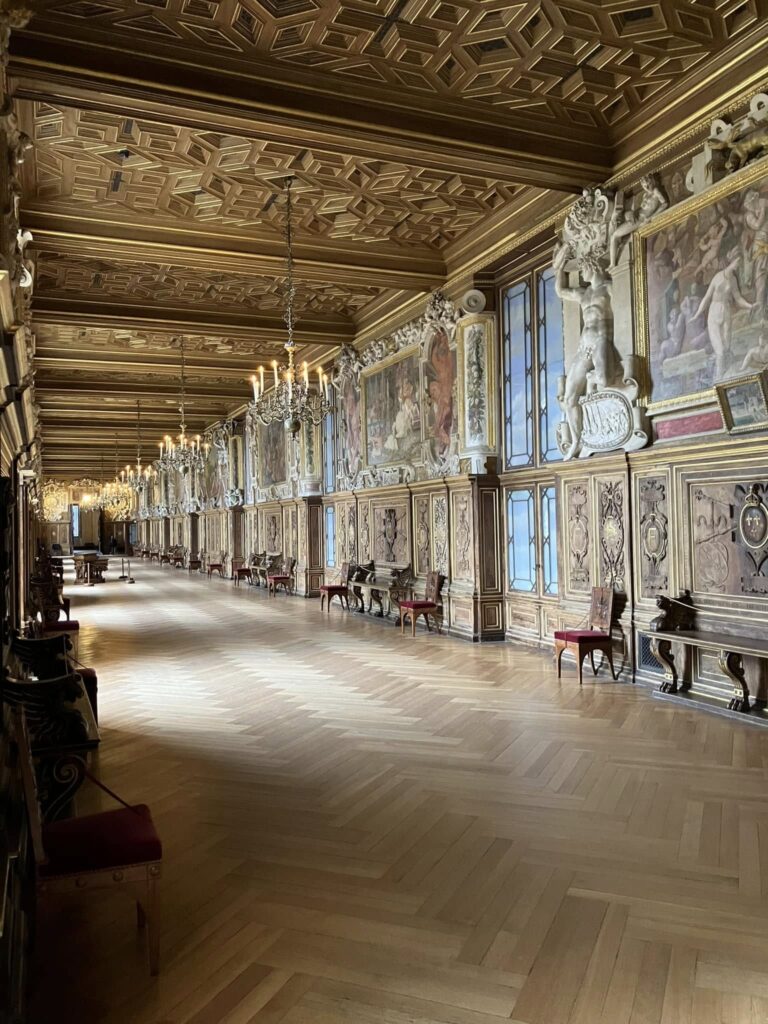
My Secret Alternatives You Might Not Have Considered
If neither Versailles nor Fontainebleau fits your plans, let me suggest several alternatives:
Château de Vaux-le-Vicomte
The inspiration for Versailles, built by the same team before Louis XIV became jealous and hired them away to build his palace. Their summer evening candlelight visits are magical.
Château de Chantilly
Just 25 minutes from Paris with France’s second-largest antique painting collection. Le Nôtre’s gardens rival Versailles with none of the crowds. Click here to book tickets in advance.
Paris: Opera Palais Garnier
Experience royal opulence without leaving Paris. The opera house’s grand staircase and gilded interiors provide that Versailles feeling in a more intimate setting. Click here for tickets.
Paris: Hôtel de la Marine
Recently restored royal building on Place de la Concorde. Designed by the same architect as Versailles’ Petit Trianon, it offers a taste of 18th-century royal aesthetics in a one-hour visit. Plan ahead with tickets.
Paris: Napoleon Apartments at the Louvre
Perfect for understanding how French imperial style evolved after Versailles. These overlooked rooms showcase 19th-century royal opulence. Use this link to buy Louvre tickets.
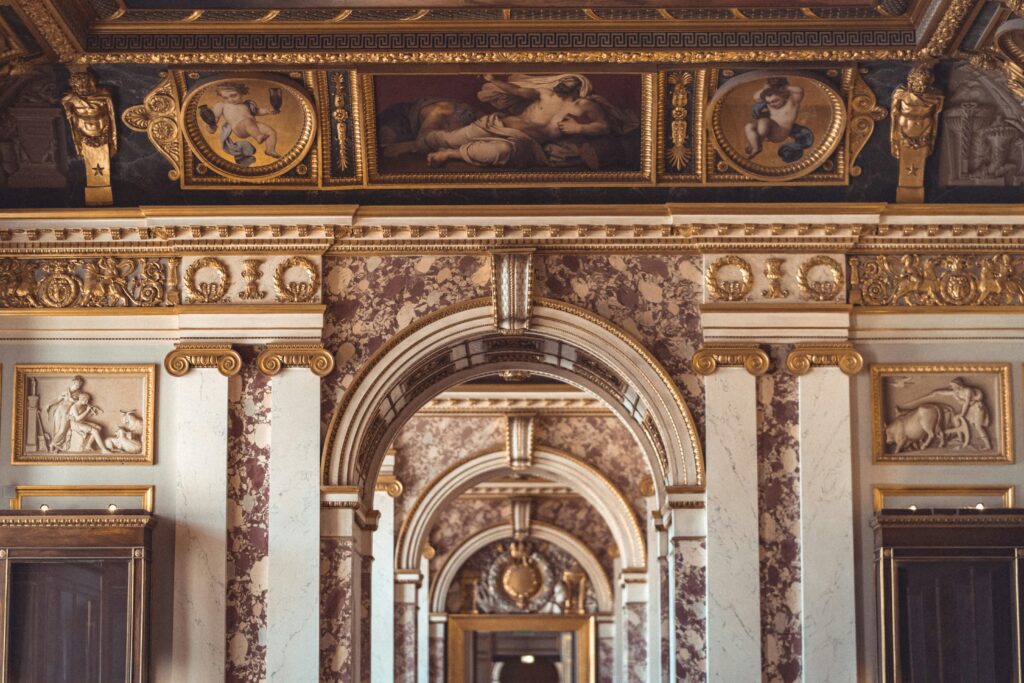
The Great Château Debate: What I Finally Decided
After weighing all the evidence and opinions, my decision came down to what I personally value in travel experiences. Here’s my verdict:
- Go with Versailles if: You’re like me and can’t bear the thought of returning home to answer “You went to Paris and DIDN’T see Versailles?!” It’s your first (and possibly only) trip to France, you’re fascinated by Louis XIV and Marie Antoinette, or you’ve cleverly planned your visit for a Tuesday in February.
- Choose Fontainebleau if: You’re travel-savvy and like to prioritize quality over famous names. You’ll appreciate the peaceful atmosphere, the chance to actually see the furniture instead of other tourists’ heads, and the opportunity to picnic like French royalty in gardens you can actually enjoy.
Both châteaux have earned their place in French history. Versailles attracts millions for good reason—its historical significance and artistic achievement are unquestionable. Equally, Fontainebleau’s more intimate experience allows for a different kind of historical appreciation.
The choice ultimately depends on your personal travel priorities: iconic grandeur or historical breadth, famous landmark or peaceful exploration.
